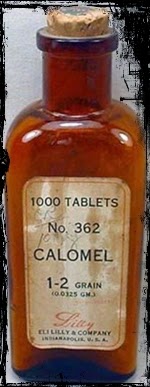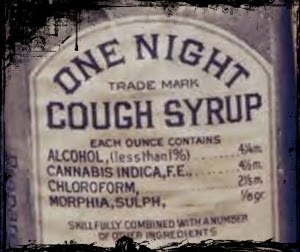Common Victorian Diseases Vol. 2
Rickets - A disorder caused by a lack of vitamin D, calcium, or phosphate, this malady leads to softening and weakening of the bones. In development, if you are a child, this leads to bowed legs, skeletal deformities, and pain in the bones of the body.
If you are poor, make sure you drink your Tang and Sunny D so you don't get Rickets, because it sucks! Vitamin D is important so anything fortified with Vitamin D, even (Yuck!), sunlight, little vampires will keep this malady at bay.
Vegans and Vegetarians beware, because without enough of the aforementioned nutrients in your body, you just might become a ricket baby. Oh and say goodbye to your teeth if you have rickets and those will probably be the first to go!
Final results can be a deformed skull, pigeon chest (Imagine the image and you will know what that is.), pelvic deformities, short stature, and spine deformities such as Scoliosis. I have that!
Syphillis - Now this, I don't and thank God have never had, yay! Syphilis is a highly contagious disease spread primarily by sex, duh, its an STD, and is caused by the bacteria Treponema pallidum. Sex includes oral and anal, peeps. Occasionally, the disease can be passed to another person through deep, prolonged kissing or close bodily contact. Although this disease is spread from sores, the vast majority of those sores go unrecognized. The infected person is often unaware of the disease and unknowingly passes it on to his or her sexual partner. Pregnant women with the disease can spread it to her unborn child. This disease, called congenital syphilis, can cause abnormalities or even death to the fetus.
Syphilis was once a major public health threat, commonly causing serious long-term health problems such as arthritis, brain damage, and blindness. It defied effective treatment until the late 40's, when penicillin was developed.
Primary Syphilis - People with primary syphilis develop sores. The sores look like huge circular bug bites and can be solid, hard to the touch, and painless. They occur on the genitals or in and around the mouth between 10-90 days (about three weeks) after exposure. Even without treatment they heal without a scar within six weeks.
Secondary Syphillis - lasts one to three months and starts within six weeks to six months after exposure. People with secondary syphilis experience a rosy rash, typically on the palms of their hands and soles of their feet. However, different types of rashes may occur on other parts of the body, sometimes mimicking other kinds of rashes from other medical problems.. Sufferers might also experience saturated warts in the groin, white patches on the inside of the mouth, swollen lymph nodes, fever, and weight loss. Like primary Syphillis, this stage of symptoms will clear up without treatment.
Latent Syphilis- This is where the infection lies dormant without causing symptoms, which was very dangerous and still is to those who actually missed all the symptoms that occurred up until this stage. Now, a sufferer is fawking fawked!
Tertiary Syphilis - If the infection wasn't treated, it could and often would progress to a stage characterized by severe problems with the heart, brain, and nerves that can result in paralysis, blindness, dementia, deafness, impotence (Thank God!), and eventual death if left untreated. Another sexy complication was your nose caving in on your face, sexy!
Now, in Victorian times, there were no antibiotics so these geniuses used Mercury in the hospitals, often run by charitable organizations, to treat and hopefully cure the wretched disease. Usually a patient would die of Mercury poisoning, but not all the time. Mercury could be delivered as calomel (mercury chloride). They had a form that came in a rub, a steam bath or a pill. The effects of this treatment were worse than the actual disease, for the most part. Many of those who were treated with Mercury lost their teeth, had sores all over their bodies (ulcers), and severe neurological damage. They often went "mad".
Syphilis was once a major public health threat, commonly causing serious long-term health problems such as arthritis, brain damage, and blindness. It defied effective treatment until the late 40's, when penicillin was developed.
The Stages of Syphilis
Primary Syphilis - People with primary syphilis develop sores. The sores look like huge circular bug bites and can be solid, hard to the touch, and painless. They occur on the genitals or in and around the mouth between 10-90 days (about three weeks) after exposure. Even without treatment they heal without a scar within six weeks.
Secondary Syphillis - lasts one to three months and starts within six weeks to six months after exposure. People with secondary syphilis experience a rosy rash, typically on the palms of their hands and soles of their feet. However, different types of rashes may occur on other parts of the body, sometimes mimicking other kinds of rashes from other medical problems.. Sufferers might also experience saturated warts in the groin, white patches on the inside of the mouth, swollen lymph nodes, fever, and weight loss. Like primary Syphillis, this stage of symptoms will clear up without treatment.
Latent Syphilis- This is where the infection lies dormant without causing symptoms, which was very dangerous and still is to those who actually missed all the symptoms that occurred up until this stage. Now, a sufferer is fawking fawked!
Tertiary Syphilis - If the infection wasn't treated, it could and often would progress to a stage characterized by severe problems with the heart, brain, and nerves that can result in paralysis, blindness, dementia, deafness, impotence (Thank God!), and eventual death if left untreated. Another sexy complication was your nose caving in on your face, sexy!
Now, in Victorian times, there were no antibiotics so these geniuses used Mercury in the hospitals, often run by charitable organizations, to treat and hopefully cure the wretched disease. Usually a patient would die of Mercury poisoning, but not all the time. Mercury could be delivered as calomel (mercury chloride). They had a form that came in a rub, a steam bath or a pill. The effects of this treatment were worse than the actual disease, for the most part. Many of those who were treated with Mercury lost their teeth, had sores all over their bodies (ulcers), and severe neurological damage. They often went "mad".
Of course, nowadays, its sad that Syphilis can be easily diagnosed with a quick and inexpensive blood test and cured with a round of antibiotics.
Typhus (Not to be confused with Typhoid) - Via Medline Plus Medical Encyclopedia:
Typhus is caused by one of two types of bacteria: Rickettsia typhi or Rickettsia prowazekii.
Rickettsia typhi causes murine or endemic typhus.
- Endemic typhus is uncommon in the United States. It is usually seen in areas where hygiene is poor and the temperature is cold. Endemic typhus is sometimes called "jail fever." The bacteria that causes this type is usually spread by rats to fleas to humans.
- Murine typhus occurs in the southern United States, particularly California and Texas. It is often seen during the summer and fall. It is rarely deadly. You are more likely to get this type of typhus if you are around rats feces or fleas, and other animals such as cats, opossums, raccoons, and skunks.
Symptoms of murine or endemic typhus may include:
- Abdominal pain
- Backache
- Dull red rash that begins on the middle of the body and spreads
- Very High Fever (105 - 106 Deg. Fahrenheit), which can last about 2 weeks
- Hacking, dry cough
- Headache
- Joint and muscle pain
- Nausea
- Vomiting
- Chills
- Confusion
- Cough
- Delirium
- High fever (104 degrees Fahrenheit)
- Joint pain (arthralgia)
- Lights that appear very bright; light may hurt the eyes
- Low blood pressure
- Rash that begins on the chest and spreads to the rest of the body (except the palms of the hands and soles of the feet)
- Severe headache
- Severe muscle pain (myalgia)
- Stupor
A complete blood count (CBC) may show a low white blood cell count, anemia, and low platelets. Other blood tests for typhus may show:
- High level of typhus antibodies
- Low level of albumin
- Low sodium level
- Mildly high liver enzymes
- Doxycycline
- Tetracycline
- Chloramphenicol (less common)
Patients with epidemic typhus may need intravenous fluids and oxygen. There were no IVs in Victorian times, of course.
Without treatment, death may occur in 10 - 60% of patients with epidemic typhus. Patients over age 60 have the highest risk of death. Patients who receive treatment quickly should completely recover.
Less than 2% of untreated patients with murine typhus may die. Prompt antibiotic treatment will cure nearly all patients.
Possible Complications
Avoid areas where you might encounter rat fleas or lice. Good sanitation and public health measures reduce the rat population.
Measures to get rid of lice when an infection has been found include:
- Bathing
- Boiling clothes or avoiding infested clothing for at least 5 days (lice will die without feeding on blood)
- Using insecticides (10% DDT, 1% malathion, or 1% permethrin)
Tuberculosis (TB) aka Consumption - This disease still exists. Stop squawking about how immunizations lead to retardation and Autism, because it also leads to a resurgence of diseases like Tuberculousis, Typhoid, Scarlett Fever, Measles, and Mumps, stupid! Why do people not take more stock in how history can repeat itself. I don't get it. Humans are supposed to learn from the past, duh!
Via CDC.Gov (Center for Disease Control - United States): TB is caused by a bacterium called Mycobacterium tuberculosis. The bacteria usually attack the lungs, but TB bacteria can attack any part of the body such as the kidney, spine, and brain. If not treated properly, TB disease can be fatal.
TB is spread through the air from one person to another. The TB bacteria are put into the air when a person with TB disease of the lungs or throat coughs, sneezes, speaks, or sings. People nearby may breathe in these bacteria and become infected. Not everyone infected with TB bacteria becomes sick.
As a result, two TB-related conditions exist: latent TB infection and TB disease. TB bacteria can incubate without showing symptoms. This is called latent TB infection. In most people who breathe in TB bacteria and become infected, the body is able to fight the bacteria to stop them from growing. People with latent TB infection are not infectious and cannot spread TB bacteria to others. However, if TB bacteria become active in the body and multiply, the person will go from having latent TB infection to being ill with the disease.
Symptoms of TB disease include:
Here ^^^^^^^^^^^^^^^^^^^^^^^^^^^^^^^^^^^^^^^^^^^^^^^was your Victorian cough suppressant to get through the symptoms, well screw it, you were going to die anyway!
There are two kinds of tests that are used to detect TB bacteria in the body: the TB skin test (TST) and TB blood tests. They had no testing or antibiotics to eradicate TB in the Victorian-era. Alcohol, drugs, smoking and Diabetes cause a greater risk of catching TB. There was no treatment for Diabetes in Victorian times either.
One of the sexiest posts I have posted on this blog yet, ay?!
- a bad cough that lasts 3 weeks or longer
- pain in the chest
- coughing up blood or sputum
- weakness or fatigue
- weight loss
- no appetite
- chills
- fever
- sweating at night
Here ^^^^^^^^^^^^^^^^^^^^^^^^^^^^^^^^^^^^^^^^^^^^^^^was your Victorian cough suppressant to get through the symptoms, well screw it, you were going to die anyway!
There are two kinds of tests that are used to detect TB bacteria in the body: the TB skin test (TST) and TB blood tests. They had no testing or antibiotics to eradicate TB in the Victorian-era. Alcohol, drugs, smoking and Diabetes cause a greater risk of catching TB. There was no treatment for Diabetes in Victorian times either.
One of the sexiest posts I have posted on this blog yet, ay?!
You've added this content to your favorites.

Post your comment
Load More





